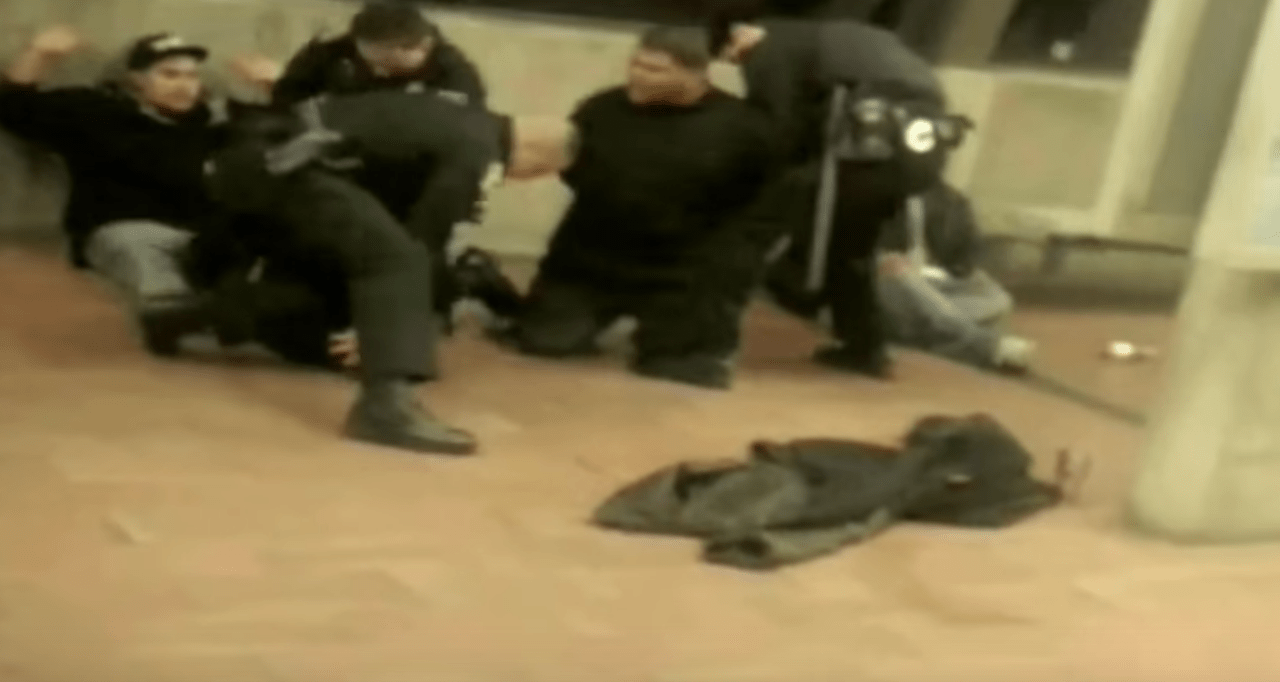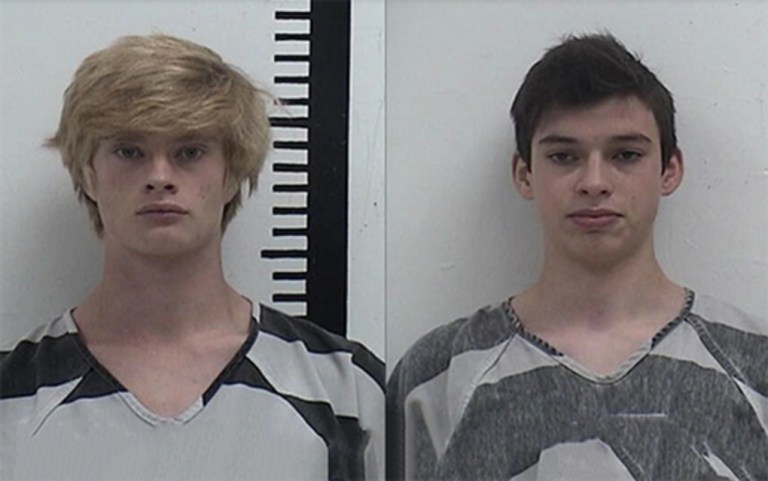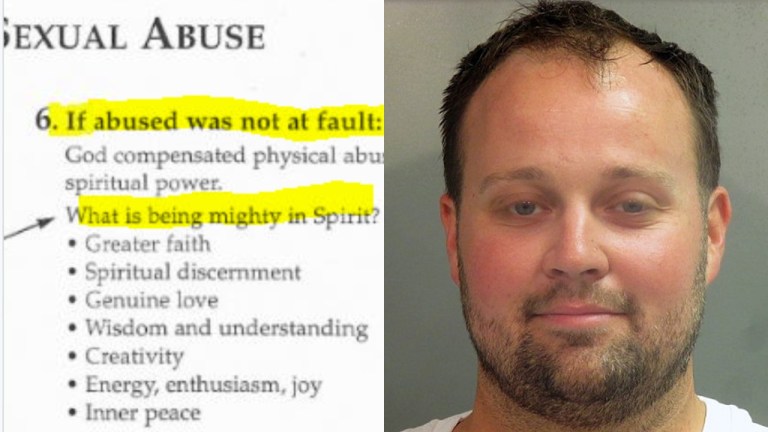A Former Teacher’s Thoughts On Police Brutality
"Why do we give police officers the right to use excessive physical force — whenever they want — in our cities?"
By ![]() Lauren Smith
Lauren Smith

[youtube https://www.youtube.com/watch?v=_TPucQHtHZs&w=560&h=315%5D
What if police officers abandoned the ideology of “Listen to me because I have a gun,” and instead turned to the teacher’s ideology of “Listen to me because I care”?
I am not here to declare “war on the police” or label all police as corrupt and evil. I know what it’s like to work for an underappreciated profession in which a few bad apples (or in your case, donuts?) ruin the reputation of everyone, and suddenly the world tries to tell you how to do your job, despite the fact that they have zero experience in your field. I thus do not seek to lecture police officers, but simply present some stark contrasts between the authority of the city and that of the classroom.
People are quick to degrade the entire police profession each time (another) unarmed Black man is killed by one cop’s implicit bias, just like society has written off all teachers based on unreliable test scores, or on negative experiences with cranky tenured teachers giving uninspiring lectures because they “don’t give a crap.” Just as most teachers are hard-working individuals who give 200% to their students, I’m guessing the same is true for our men and women in blue.
But as a former teacher, I have my concerns about the general policing approach in our country. My concern emerged last spring when, after story upon story of excessive violence against Black men, I compared them to my own experience in a middle school classroom in Manhattan. When I compared these various officers’ actions to my daily management of 90 sixth graders — a task that sucked every ounce of energy from me — something felt unjust.
Here I was, laboring daily to create a safe and controlled environment with increasingly challenging students, while officers across the country were using chokeholds, running over suspects with their patrol cars, and gunning down 12-year-old boys in the park. Imagine if I responded to a student’s eye roll by throwing her out the window. Is there any question about whether or not I would be fired?
Okay, maybe an eye roll is insignificant. Say the student actually stood up and pushed me. She is now being blatantly insubordinate and is a danger to me and her classmates. Do I get to throw her out the window now?
Still no. What if I tried to talk her down, but she continued pushing me? What if I then attempted to restrain her, at which point she punched me square on the jaw? Certainly I can throw her out the window now.
Nope. Pretty sure I would still be fired. News reports would have a field day: “NYC Teacher Throws Troubled Child Out 5th Floor Window.” I would become a household name for a solid week until the next Miley Cyrus scandal and my identity resumed its insignificance.
When it comes to management, teachers essentially have two choices when they step foot in the classroom: to create a hostile “me versus them” environment, or a safe “me WITH them” environment. The teacher can theoretically maintain authority in both rooms, but in the former, the students are far more likely to rebel out of disdain for the teacher. In the latter, the students ideally view the teacher as a guiding figure whom they can trust and learn from. Students feel safe, their basic needs are met, and they’re more likely to cooperate.
In both environments, the teacher can give explicit instructions and uphold strict expectations, yet the difference is how the teacher responds to student misbehavior, whether it’s whistling during instruction, flipping over a desk, or anything within that spectrum.
And the spectrum itself is crucial to how we respond. To create a cooperative learning space, we are explicitly trained in choosing the least intrusive consequence. If a child is whispering to a neighbor, we don’t need to send them to the principal’s office; we can simply stand next to them and use proximity to subtly coerce them to comply. If the class goes off-task and becomes rowdy during an experiment or activity, we won’t immediately resort to screaming and assigning everyone detention. Our job is always to keep order while simultaneously maintaining fairness, mutual respect, and a calm, safe environment.
The response must match the misbehavior in severity, but even in the worst-case scenario, our job is to protect everyone in the class — even the one misbehaving. Say, for example, a student storms into the room with fists clenched and eyes locked on his “enemy.” He begins yelling about something that happened between them at lunch, and the entire class is now out of their seats, encouraging a fight and adding to the chaos.
We do not shoot the aggressor. We do not tranquilize him. We do not tackle him. In fact, teachers are essentially forbidden from touching students at all, and even physically restraining an aggressive student could potentially land us in trouble.
Instead, teachers receive training on de-escalation. In certification classes and professional development sessions, we practice what to do and say to calm and redirect a student, whether she is talking back, harassing a classmate, or storming into the room and preparing to throw some punches. A teacher skilled in de-escalation could cease the confrontation without even yelling, and all students would safely return home at the end of the day.
Common sense tells me this type of training is likely included for police officers as well. I also recognize that police are generally dealing with more egregious issues than anything that most students would offer (although students are blurring that line more every year). However, what concerns me is the different expectations we place on each — the teacher and the police officer.
The teacher is micromanaged by administrators, parents, the government, and even the students themselves. The teacher is expected to maintain authority without the use of weapons, physical touch, or even — when avoidable — yelling. The teacher has zero physical threat because students know they cannot be hit or physically punished by a teacher. Thus, the teacher uses different tactics to keep students in order: positivity, rewards, relationship building, and mutual respect and trust. When something goes astray in the classroom, the teacher relies on trust and respect gained throughout the school year to de-escalate or redirect the student into cooperating. It is, without any doubt, exhausting, but teachers have no other option, so authority through respect is the only way to create a safe space to learn.
The police officer — at least from my outsider perspective — forces cooperation. The officer carries weapons. The officer is allowed and encouraged to use physical force and restraint. Because the police officer has the legal power to hurt or kill, the officer can use threat and intimidation. The police officer CAN use de-escalation, but with more forceful and violent methods at his or her disposal, it often seems only minimal attempts at calming the suspect are made before succumbing to the convenience of restraint or weapons.
If a teacher were to physically restrain an angry student threatening a classmate in the hallway, the teacher could potentially face legal trouble. If a police officer were to physically restrain an angry citizen threatening another man on the sidewalk, nobody would think anything of it.
My question is not “Why aren’t teachers given the right to use physical force in the classroom?” Instead, I wonder: “Why do we give police officers the right to use excessive physical force — whenever they want — in our cities?”
I do not argue that officers should never be able to use physical force. As I said before, a classroom is not the same as a city and it’s not a perfect comparison. Still, how many lives could be saved if officers turned to the teacher’s art of de-escalation before pulling out their guns? How many prison sentences, court cases, and taxpayer dollars could be spared if officers proactively created a community of trust and respect instead of reactively using threat and physical force?
I am sure many officers — even those involved in recent brutality scandals — would claim they attempted de-escalation before resorting to force. However, is it possible that officers do not give a wholehearted attempt to calmly de-escalate a situation knowing they have the convenient, quicker use of weapons and force, unlike teachers whose only “weapon” IS de-escalation?
If this all sounds impossible, it’s worth noting that many countries around the world employ much more peaceful policing techniques — some of their officers don’t even carry guns! All countries have unique cultures and personalities, so we can’t blindly implement the rules from another country and expect them to work perfectly here. Still, given the United States contributes an entire quarter of the world’s prison population, mostly comprised of offenders of nonviolent crimes, we should start considering alternative approaches. If it can be done in other countries — and in our classrooms — we have no excuse to not try it here. ![]()




